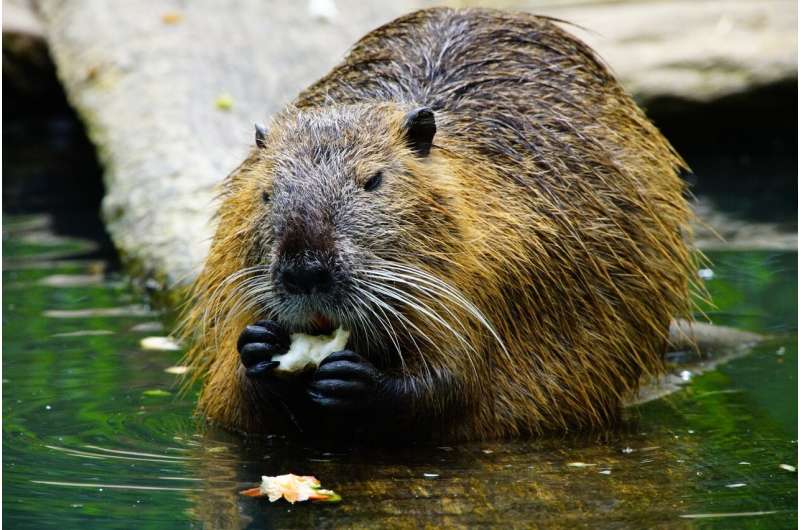

Chronic wasting disease (CWD) is an infectious disease that affects the central nervous systems of animals, typically affecting cervids such as deer, elk and moose.
“CWD is always fatal. There’s no cure, there are no treatments,” says Debbie McKenzie, a professor in the Department of Biological Sciences.
CWD is increasing its geographic range as well as its prevalence. It is affecting populations in a wider range, while animals in areas with a history of CWD are being infected in higher numbers. Gathering data is the first step to stopping the spillover of the disease from cervids to other animals.
Researchers at the U of A examined potential transmission to beavers, and found that they do appear susceptible to chronic wasting disease, according to a recent study published in Biology.
CWD first began appearing in the 1960s in small areas of Colorado and Wyoming, explains McKenzie. It’s now in 30 states in the United States as well as three provinces. The prevalence is skyrocketing, within regions, too. Some areas near the Alberta-Saskatchewan border report rates of infection around 50 percent, and in areas around Swift Current, Sask., 85 percent of mule deer bucks test positive for CWD.
“As it expands, more deer are exposed, and more of the landscape becomes contaminated,” says McKenzie.
The susceptibility of other animals is important information because they have the potential to spread the disease. For example, if CWD were to jump into caribou populations, the geographical spread would amplify since caribou are migratory.
McKenzie and her team decided to start by examining beavers. “There’s a lot of overlap between beavers and deer, particularly at water sources,” McKenzie says. Additionally, deer will often rub against or urinate on trees that beavers use, making it likely that beavers could be exposed.
CWD is a prion disease, a family of diseases characterized by misfolded proteins. Other prion diseases include bovine spongiform encephalophy (BSE, or mad cow disease). In collaboration with David Westaway and his team, McKenzie created a beaver analog in a lab model to study how an actual beaver might respond to infection with strains of prion protein from sources such as deer, elk, hamsters and mice. She was able to see which strains were infectious and which left the beaver analog unaffected.
The results were surprising. “We had no idea if CWD or any prion would go into beavers, so we basically took everything we had and tested it,” says McKenzie. “We were absolutely astounded that nearly every strain showed infection.”
Interspecies transmission complicates matters further, McKenzie explains. For example, there may be a strong species barrier preventing transmission between two particular species, but if a third species were to become infected, those previously unaffected species might become much more susceptible to infection from that third species.
“In terms of managing the disease, that’s a critical component because even if you could come up with a strategy to manage CWD in deer, if it’s in other species, it’s going to make it that much more difficult to control.”
As for humans becoming infected, McKenzie says there have been no reported cases of CWD infecting humans. However, she advises that the high prevalence and geographical expansion means that those who hunt may want to take safety measures.
“If you hunt and are going to eat venison, get your animal tested. If it’s positive (for CWD), don’t eat it, because we just don’t know the potential impact,” McKenzie says.
Though there are other prion diseases that affect humans, researchers and medical professionals aren’t yet familiar with how CWD might present in human populations.
McKenzie and her team are planning to look at susceptibility of transmission into pronghorn antelope populations next. They’re also examining environmental factors of CWD. For example, they want to find out whether and how prion proteins can be detected in the soil, and how long these infectious proteins remain in the soil.
Breakthrough in chronic wasting disease research reveals distinct deer, elk prion strains
Allen Herbst et al, Susceptibility of Beavers to Chronic Wasting Disease, Biology (2022). DOI: 10.3390/biology11050667
University of Alberta
Citation:
Can beavers catch chronic wasting disease? (2022, June 28)
retrieved 28 June 2022
from https://phys.org/news/2022-06-beavers-chronic-disease.html
This document is subject to copyright. Apart from any fair dealing for the purpose of private study or research, no
part may be reproduced without the written permission. The content is provided for information purposes only.

